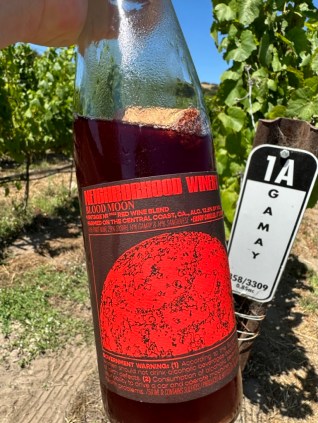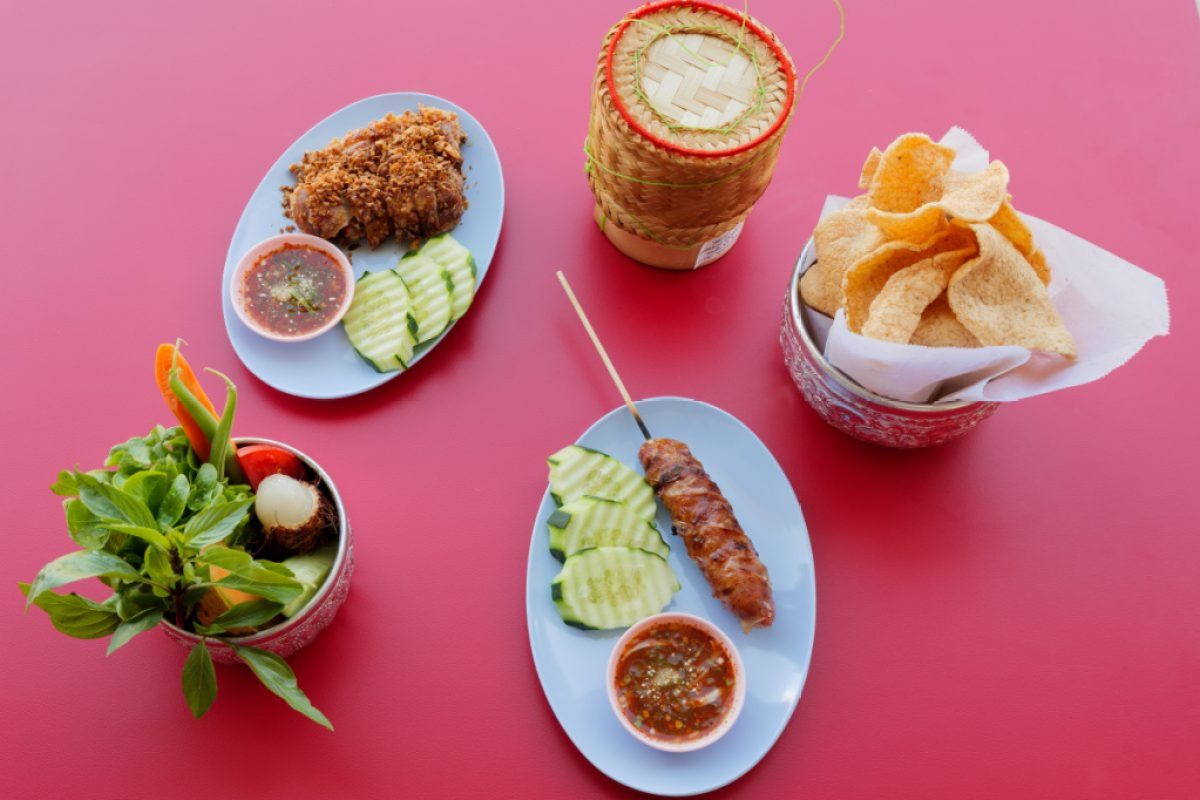Full Belly Files | What Sets Pali Wine Co. Apart
This edition of Full Belly Files was originally emailed to subscribers on August 25, 2023. To receive Matt Kettmann’s food newsletter in your inbox each Friday, sign up at independent.com/newsletters.

When I first met Aaron Walker more than a decade ago, we were in similar stages of our personal and professional lives. We both had young children and were settling into the long-term groove of our careers — he as winemaker for Pali Wine Co., me as wine writer for this newspaper and other publications — so we became friends rather quickly after hanging out for this 2012 article.
I was already friendly with numerous other vintners at that point, but Aaron was maybe my first true peer of that group: close to my age, similar family setups, working for a paycheck, and living in downtown Santa Barbara (not the Santa Ynez Valley). We hung out quite a bit, especially during the annual run of New Noise Santa Barbara — the music festival and conference I co-founded and helped run from 2009 to 2015— and even got into trouble in New York City, New Orleans, and San Diego together, connecting almost entirely by coincidence each time.
While we haven’t hung out as much recently — life is busy for both of us, and he moved from Santa Barbara to Orcutt many years ago — that relationship has occasionally provided a pretty direct view into the operations of Pali. Given that Pali is significant in size, at least for Santa Barbara (more than 20,000 cases), owns an estate vineyard in the Sta. Rita Hills (which I visited back when it was being planted), and makes a wide range of small-batch and larger production bottlings, understanding their company also gives me uniquely honest insight into much of the wine world at large.

There are two things that set Pali apart from other wineries across the Central Coast and Southern California. One is that, in addition to tasting rooms in the Funk Zone and Lompoc (that sort of wine country/downtown combo is quite common here), the winery operates satellite rooms in urban settings of San Diego’s Little Italy, Anaheim’s Packing District, and downtown Los Angeles’ Arts District. They do so by operating just enough wine production in each space — some barrels here, some tanks there, basically — to qualify for the additional tasting permits. Though an innovative way to get your wine to more people, the format hasn’t triggered many copycats, likely because the hospitality aspect is hard to pull off.
Secondly, rather than just clinging to one side of today’s great debate over what wine should be — with conventionally made wines on one side, and so-called “natural” wines on the other — Pali began embracing both a half-decade ago. Today, the “normal” wines — which often use commercial yeast, among other modern techniques — still sport the “Pali Wine Co.” brand (or “Tower 15,” for non-Burgundian bottlings), while the “natural”-leaning wines (wild yeast, often carbonic, minimal sulfur, etc.) carry the colorfully designed “Neighborhood Winery” labels.
Altogether, the winery produces more than three dozen wines each vintage, from buttery chardonnay, elegant pinot noir, and old-vine zinfandel to punchy blends of multiple grapes and wines mixed with hard cider and even hops. That gives plenty to choose from for all sorts of customers across their locations, from educated collectors seeking classic versions of pinot noir to the wine-curious young hipsters for whom artistic labels and zippy sips are more attractive.
Neither of these ideas were solely Aaron’s. The winery’s owner Tim Perr — who works in the insurance industry but has plenty of relevant real estate experience — conceived of the satellite tasting locations, and his son, Nick Perr, pushed the natty wine line, seeing how popular those styles were with his friends in Los Angeles. But as the winemaker, it’s been largely Aaron’s role to make them happen.


Neighborhood Winery’s “Aaron’s Revenge,” a hopped white wine (left); and the “Chardonapple” cider-chardonnay by Pali Wine Co. | Credit: Matt Kettmann
Though difficult to pull off, and requiring lots of additional travel, the extra tasting rooms made logical sense to Aaron, and the team continues to fine-tune those operations. But as someone who made wines conventionally his whole career, Aaron was openly hesitant about the natural wines, worried that they may not taste good, undermine the brand’s established reputation, or even infect the winery with bad bacteria.

But as I witnessed firsthand this past Tuesday — when I spent the day with birthday-boy Aaron; Nick; Nick’s wife, Carmen (who runs the wildly popular “Carmen in the Garden” social media brand); and others on the Pali team — the lessons that they’re learned together in developing the Neighborhood Winery brand are positively influencing the Pali and Tower 15 wines. And the knowledge that Aaron gained over years of making conventional wines is also responsible for the success of Neighborhood, which, while often avant-garde in style, come off as clean and crisp rather than funky and sour, as so many natural wines can be.
“Coming from Los Angeles, natural wine is everything — it’s style, it’s youth culture,” explained Nick of why he wanted to explore that type of wine. But he quickly learned from Aaron that the goal, no matter the approach, must remain the same. “I came to understand that what we’re trying to do is make the best possible wine from an eclectic group of vineyards,” explained Nick.
The natty wine work, meanwhile, is helping Aaron realize that ripe flavors can still come from grapes with lower sugars. He is seeing that from ancient-vine sites like the century-old Enz Vineyard in San Benito County, where the mourvèdre, zinfandel, and cabernet pfeffer grapes pack in plenty of flavor at low brix, and also in vintages, like 2022, where the vines shut down due to high heat.
The best evidence that Pali’s programs are working is that they’re actively investing more on both fronts. This fall, they’re expanding their footprint by opening a restaurant in San Diego’s Hillcrest neighborhood, where they’ll showcase their wines alongside other selections. “This is going to be like Pali and our friends,” said Nick.

On the creative wine side, they’re expanding cider collaborations with Benny Boy Brewing, their neighbor in the Arts District, while Aaron is talking about hop extracts and thiol-enhancing yeast strains with the brewers at Naughty Oak Brewing in Orcutt. And in their estate vineyard, which sits on Gypsy Canyon Road between Machado, the former Hilliard Bruce, and Kessler-Haak vineyards, they’ve ripped out some pinot noir to make way for gamay, dornfelder, syrah, and chenin blanc, which will see their first harvest this fall. Whether they become standalone bottlings or blending components remains to be seen, but the smart money would be on both outcomes.
Aaron is particularly jazzed about the chenin blanc. He’s sourced the popular Jurassic Park grapes from Curtis Vineyard in Foxen Canyon for wines in the past, but does not believe anyone else has planted it in the Sta. Rita Hills.
“No one else is growing it here, so we wanted to be a pioneer in that respect,” said Aaron of yet another Pali innovation. “And we figured, ‘Why not?’”
See paliwineco.com.
From Our Table

Here are stories you may have missed:
- Santa Barbara Winery is for sale. The late founder Pierre Lafond’s granddaughter Sara Deinhard explained why in this story.
- Vanessa Vin introduces readers to Soul Bites, the home for soul food (and comedy) on State Street.
- Colette Victorino visits The Eddy Corner Market, a new small grocer on the corner of Santa Barbara and De la Guerra streets.
- Here’s my report on why we’re rah-rah for Na Na Thai, the Bangkok-to-Buellton restaurant with tons of twists and turns for the couple in charge.




You must be logged in to post a comment.